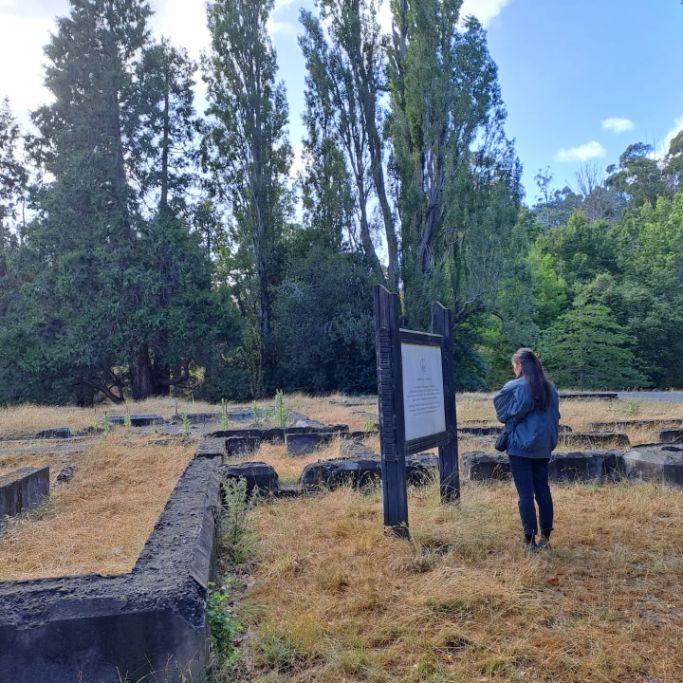‘Ready Money’ Robinson Proves Cash Is King
Just south of Cheviot township, a small sign invites you to leave SH1 and venture down a side road to the Cheviot Hills Reserve. There you will find a peaceful parkland and the foundations of what was once a majestic mansion, which are all that remain of the legend of ‘Ready Money’ Robinson.
Today, the land on which Robinson’s mansion stood is subject to a Memorandum of Understanding between the Cheviot Reserves Committee and the Hurunui District Council. It features an open cricket pavilion built onto the original steps of the bygone mansion, along with the mansion’s foundations and century-old oak and eucalyptus trees that are some of the largest specimens in the country. Inside the cricket pavilion is a detailed floor plan and photographs of the homestead that fill in the gaps in visitors’ imaginations, taking them back to when a magnificent homestead stood on the grounds over 150 years ago.

Hurunui District Mayor Marie Black says the district is full of such legends and history. “They were challenging times and not for the faint-hearted. They attracted men and women who were personalities and, of course, the stories built up from there.”
English-born William Robinson had the advantage of money when he arrived in New Zealand after starting a merino stud in Australia. John Scott Caverhill had a squatter’s licence for the Cheviot Hills pastoral run but Robinson was able to put “ready money” down for the transfer of Caverhill’s Cheviot Hills licence, thus earning himself the moniker that endures today.
Robinson was to accounts a good employer who managed the run well. Aside from building a stately mansion, he employed renowned horticulturalist James Kidd as landscape gardener, using plants shipped from England to create an English estate garden of the ‘picturesque style’ that extended to natural-looking plantations and well-stocked paddocks.
After Robinson’s death in 1889, the government bought the estate and divided it into smaller farms, with the homestead and 5,000 acres being worked by Robinson’s daughter. On her death, the land was sold and the mansion house burned down in 1936 as it awaited demolition.
Cheviot Hills Reserve is one of the reserves included in the draft Reserves Management Plan, which opened for public consultation on 27 March and closes on 23 May.


 Gordon Campbell: On The Government’s Latest Ferries Scam
Gordon Campbell: On The Government’s Latest Ferries Scam PSA: Disappointing Govt Attack On Diversity, Inclusion In Public Service
PSA: Disappointing Govt Attack On Diversity, Inclusion In Public Service NZ Labour Party: Govt Health And Safety Changes Put Workers At Risk
NZ Labour Party: Govt Health And Safety Changes Put Workers At Risk Amnesty International Aotearoa New Zealand: Democracy At Risk
Amnesty International Aotearoa New Zealand: Democracy At Risk Walk Without Fear Trust: New Sentencing Reforms Aimed At Restoring Public Safety Welcomed
Walk Without Fear Trust: New Sentencing Reforms Aimed At Restoring Public Safety Welcomed Rio Tinto & NZAS: Archaeological Project Underway From Historic Excavations At Tiwai Point
Rio Tinto & NZAS: Archaeological Project Underway From Historic Excavations At Tiwai Point New Zealand Deerstalkers Association: NZDA Urges Hunters To Prioritise Safety This Roar Season
New Zealand Deerstalkers Association: NZDA Urges Hunters To Prioritise Safety This Roar Season


